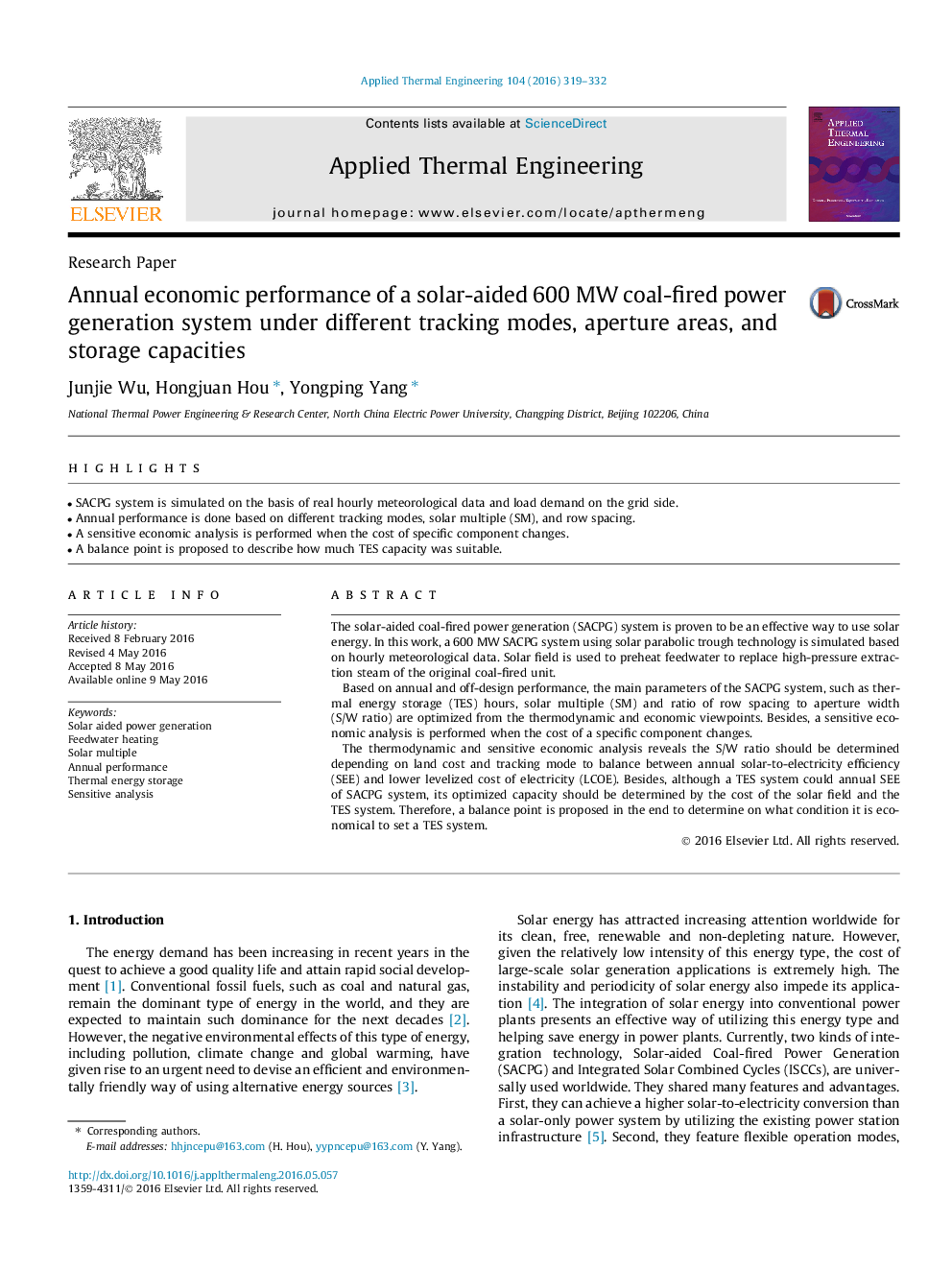| کد مقاله | کد نشریه | سال انتشار | مقاله انگلیسی | نسخه تمام متن |
|---|---|---|---|---|
| 644507 | 1457124 | 2016 | 14 صفحه PDF | دانلود رایگان |

• SACPG system is simulated on the basis of real hourly meteorological data and load demand on the grid side.
• Annual performance is done based on different tracking modes, solar multiple (SM), and row spacing.
• A sensitive economic analysis is performed when the cost of specific component changes.
• A balance point is proposed to describe how much TES capacity was suitable.
The solar-aided coal-fired power generation (SACPG) system is proven to be an effective way to use solar energy. In this work, a 600 MW SACPG system using solar parabolic trough technology is simulated based on hourly meteorological data. Solar field is used to preheat feedwater to replace high-pressure extraction steam of the original coal-fired unit.Based on annual and off-design performance, the main parameters of the SACPG system, such as thermal energy storage (TES) hours, solar multiple (SM) and ratio of row spacing to aperture width (S/W ratio) are optimized from the thermodynamic and economic viewpoints. Besides, a sensitive economic analysis is performed when the cost of a specific component changes.The thermodynamic and sensitive economic analysis reveals the S/W ratio should be determined depending on land cost and tracking mode to balance between annual solar-to-electricity efficiency (SEE) and lower levelized cost of electricity (LCOE). Besides, although a TES system could annual SEE of SACPG system, its optimized capacity should be determined by the cost of the solar field and the TES system. Therefore, a balance point is proposed in the end to determine on what condition it is economical to set a TES system.
Journal: Applied Thermal Engineering - Volume 104, 5 July 2016, Pages 319–332